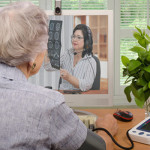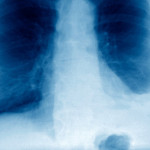• Pleural effusions present a common diagnostic problem: there are over 50 known causes. A clinical review describes how a primary care physician and a specialist can approach patients with pleural effusion to reach an etiologic diagnosis using clinical features, imaging, fluid analysis, and pleural biopsy. It also presents strategies to manage the breathlessness that afflicts patients with pleural effusion. The review includes the perspective of two patients and also identifies clinical and research questions that remain to be answered.
• Pulmonary embolism is another condition that is often challenging to diagnose. Several clinical decision rules have been developed to help differentiate patients in the emergency room with symptoms suggestive of embolism who require further testing from those who may be discharged home.  But can these decision rules be applied in a primary care setting?
But can these decision rules be applied in a primary care setting?
A systematic review found that five of the 10 identified prediction models could be validated in a primary care setting, but they may have a relatively low sensitivity. The accompanying editorial argues that a search for the optimal decision rule is still ongoing.
• A man with bilateral neck lumps secondary to subclavian artery aneurysms poses another diagnostic dilemma and is the focus of the latest endgames.
 • Telemedicine can help bring clinical expertise to underserved areas and to patients who may not be able to visit the doctor’s office. It can be used in the setting of an established patient-physician relationship or it can be the basis for the establishment of such a relationship. An American College of Physicians (ACP) policy paper calls for changes to licensing and reimbursement rules in the US to foster the development of these services.
• Telemedicine can help bring clinical expertise to underserved areas and to patients who may not be able to visit the doctor’s office. It can be used in the setting of an established patient-physician relationship or it can be the basis for the establishment of such a relationship. An American College of Physicians (ACP) policy paper calls for changes to licensing and reimbursement rules in the US to foster the development of these services.
José G Merino is the US clinical research editor, The BMJ.

